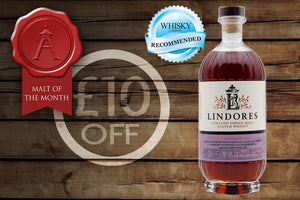
Craigellachie
During the midst of a whisky boom towards the tail end of the 1800’s, many were encouraged to start up their own distilleries in the pursuit of wealth, or seek...
Craigellachie
During the midst of a whisky boom towards the tail end of the 1800’s, many were encouraged to start up their own distilleries in the pursuit of wealth, or seek out new suppliers due to existing demand for their blended scotches. For Craigellachie these sides came together to form the Craigellachie Distillery Company Limited in 1890, with the name meaning the rocky hill and the hiring of Charles Doig to design the distillery meant no expense was spared.
The major partners were Peter Mackie who owned Lagavulin and the White Horse Distillers brand, alongside was Alexander Edward who had already established Aultmore and Benrinnes. It was a convenient arrangement as Edward’s powerbase was on Speyside, whist Mackie was seeking producers for his White Horse blend. Craigellachie would grow to become a major component of the blend over the next several decades and in 1916 Mackie gained total control of the distillery, thus securing its output. Edward had fallen on hard times after his Midas touch in the 1890’s, where the Pattison Crisis and the harsh economic realities of the First World War had forced him to sell and Aultmore followed suit a couple of years later.
Eventually the company was acquired by the Distillers Company Limited when they purchased the White Horse portfolio, before transferring Craigellachie to Scottish Malt Distillers in 1930. Its uneventful existence continues until 1964 when the distillery is rebuilt and the number of stills are doubled to 4. This was a growing trend across Speyside with distilleries turned more into production units and other duties such as maturation and cask filling were utilised at a central facility. In 1992 its output was licensed to White Horse Distillers unsurprisingly given its stature in their blend, which has declined in sales since its glory decades of the 1950’s. The distillery was acquired shortly afterwards in 1998 by John Dewar & Sons with its parent company today being Bacardi.
Until relatively recently, Craigellachie was a distillery you drove past when in the region, but rarely saw make an appearance on the shop shelf. That all changed in the 1990’s when a 14-year-old bottling appeared as part of the Flora & Fauna range that was primarily created to showcase lesser known distilleries. Today it’s one of the more collectable releases in the range, as not many were released and in 1998 the distillery and others within the John Dewar company were sold to Bacardi, which put an end to any further releases in the range. However, in 2004 it appeared as an official standalone single malt bottled at 14-years-old and until recently continued to exclusively support the Dewars range of blends including its White Label scotch.
This all changed in 2014, as Bacardi decided to showcase the distilleries it had acquired as part of the Dewar deal with a new range of single malts known collectively as the Last Great Malts programme. Each distillery received a unique bespoke design and a series of age statement expressions. For Craigellachie this comprises of the 13, 17 and 23 year olds that were joined by a 19 edition destined for travel retail. This was eventually crowned by the premium 31-year-old that in 2017 was voted as whisky of the year, giving the distillery and its whiskies a new prominence and no doubt a sales boost.
The Craigellachie style of whisky is a memorable experience thanks to the continuing use of worm tubs at the distillery. It’s an earthy yet fruity style with a hint of smoke and a heavy malt style on the palate with traces of nuts and sweetness with a dry finish. Currently it is producing around 4.1 million litres of alcohol that were mainly destined for the blended market but with this award and continuing support from independent bottlers, we may be seeing a lot more of Craigellachie in the coming years.


